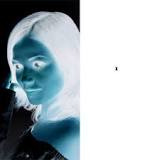Unveiling the Intriguing World of Optical Illusion Psychology
Exploring the Psychology of Optical Illusions
Optical illusions have fascinated and perplexed people for centuries, showcasing the intricate relationship between our eyes and brain. These captivating visual phenomena challenge our perception of reality, prompting us to question how we see and interpret the world around us.
The study of optical illusion psychology delves into the mechanisms behind these mind-bending images. Researchers have discovered that optical illusions exploit various cognitive processes, including depth perception, colour constancy, and motion detection. By manipulating these processes, illusionists create images that deceive our brains into perceiving something that contradicts reality.
One of the most intriguing aspects of optical illusions is their ability to reveal the limitations and biases of our visual system. For example, ambiguous figures like the famous “Necker Cube” demonstrate how our brain struggles to resolve conflicting visual information, leading to perceptual ambiguity.
Moreover, optical illusions highlight the role of context and expectation in shaping our perception. Our brains rely on past experiences and assumptions to make sense of the world, sometimes leading us to misinterpret what we see. This phenomenon is evident in illusions such as the “Müller-Lyer illusion,” where identical lines appear different lengths due to surrounding context.
Understanding the psychology behind optical illusions not only provides insights into how our brains process visual information but also offers valuable lessons about human perception and cognition. By studying these captivating phenomena, researchers can gain a deeper understanding of how our minds construct reality from sensory input.
In conclusion, optical illusions serve as a fascinating gateway into exploring the complexities of human perception. As we continue to unravel the mysteries of visual cognition, we uncover new layers of insight into the intricate interplay between our eyes, brain, and environment.
Exploring the Fascinating World of Optical Illusions: 9 Insights into Visual Perception and Psychology
- Optical illusions occur when our brain misinterprets visual information.
- Different people may perceive the same optical illusion differently.
- Contrast, colour, and patterns play a significant role in creating optical illusions.
- Optical illusions can be used to study how the brain processes visual information.
- Some optical illusions exploit the way our eyes and brain work together.
- The study of optical illusions can help us understand human perception better.
- Optical illusions challenge our perception of reality and demonstrate the limitations of our senses.
- Artists often use principles of optical illusion in their work to create intriguing effects.
- Staring at an optical illusion for too long can cause visual fatigue or discomfort.
Optical illusions occur when our brain misinterprets visual information.
In the realm of optical illusion psychology, the phenomenon of optical illusions arises when our brain misinterprets visual information. These captivating distortions in perception challenge our understanding of reality by revealing how easily our brains can be deceived by cleverly crafted images. By studying the mechanisms behind optical illusions, researchers gain valuable insights into the intricate processes that govern our visual perception, shedding light on the complexities of human cognition and highlighting the fascinating interplay between our eyes and brain.
Different people may perceive the same optical illusion differently.
In the realm of optical illusion psychology, it is intriguing to note that different individuals may perceive the same visual phenomenon in varying ways. This variability in perception highlights the subjective nature of human vision and cognition, demonstrating how factors such as past experiences, cultural background, and cognitive biases can influence how we interpret optical illusions. The diverse ways in which people perceive these captivating illusions underscore the complexity of our visual processing system and remind us that reality is not always as straightforward as it may seem at first glance.
Contrast, colour, and patterns play a significant role in creating optical illusions.
In the realm of optical illusion psychology, the interplay of contrast, colour, and patterns emerges as a pivotal factor in crafting captivating visual phenomena. These elements wield the power to manipulate our perception, leading to illusions that challenge our understanding of reality. By strategically leveraging contrast to create stark differences, employing colours to evoke specific emotions or associations, and utilising patterns to disrupt visual continuity, illusionists can craft mesmerising illusions that captivate and intrigue observers. The intricate dance between contrast, colour, and patterns underscores their profound impact on shaping how we perceive and interpret the world around us through the lens of optical illusions.
Optical illusions can be used to study how the brain processes visual information.
Optical illusions offer a valuable tool for studying the intricate mechanisms by which the brain processes visual information. By presenting our minds with deceptive images that challenge our perception of reality, optical illusions provide researchers with a unique opportunity to explore the inner workings of our visual cognition. Through careful observation and analysis of how individuals interpret and react to these illusions, scientists can gain valuable insights into the complex processes that govern our visual perception, shedding light on the fascinating interplay between our eyes and brain.
Some optical illusions exploit the way our eyes and brain work together.
Some optical illusions exploit the intricate interplay between our eyes and brain, revealing the fascinating dynamics of visual perception. By manipulating how our eyes process incoming information and how our brain interprets it, these illusions challenge our understanding of reality and showcase the complex mechanisms at play in shaping our visual experiences. Through exploring how these two vital components of our sensory system collaborate, we gain valuable insights into the mysteries of optical illusion psychology and the remarkable capabilities of the human mind.
The study of optical illusions can help us understand human perception better.
The exploration of optical illusions offers a valuable opportunity to enhance our comprehension of human perception. By delving into the intricate world of visual tricks and cognitive misinterpretations, we gain insights into how our minds process and interpret sensory information. Through studying optical illusions, we can uncover the underlying mechanisms that influence our perception, shedding light on the complexities of the human visual system and expanding our understanding of how we perceive and interact with the world around us.
Optical illusions challenge our perception of reality and demonstrate the limitations of our senses.
Optical illusions serve as captivating puzzles that challenge our perception of reality and illuminate the inherent limitations of our senses. By presenting visual stimuli that deceive our brains into misinterpreting reality, these illusions showcase the intricate interplay between what we see and how our minds process information. Through exploring optical illusion psychology, we gain valuable insights into the complexities of human perception, shedding light on the fascinating ways in which our senses can be manipulated and deceived.
Artists often use principles of optical illusion in their work to create intriguing effects.
Artists frequently utilise principles of optical illusion in their creations to produce captivating effects that challenge viewers’ perceptions. By incorporating techniques such as ambiguous figures, perspective distortion, and colour manipulation, artists can evoke a sense of wonder and intrigue in their work. These visual illusions not only add depth and complexity to artistic pieces but also engage audiences in a playful exploration of how the mind interprets visual information. Through the skilful application of optical illusion psychology, artists can transform ordinary images into extraordinary masterpieces that inspire contemplation and spark curiosity.
Staring at an optical illusion for too long can cause visual fatigue or discomfort.
Staring at an optical illusion for an extended period can lead to visual fatigue or discomfort due to the intense cognitive processing required by the brain to make sense of conflicting visual information. The prolonged focus on intricate patterns and deceptive imagery can strain the eyes and disrupt normal visual processing, resulting in temporary discomfort or a sense of disorientation. It is advisable to take breaks and allow your eyes to rest when engaging with optical illusions to prevent visual fatigue and maintain eye comfort.


